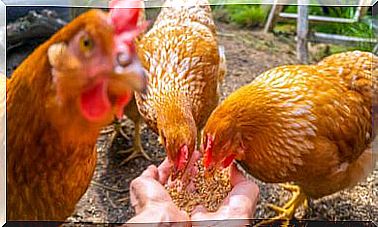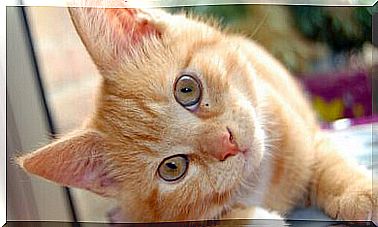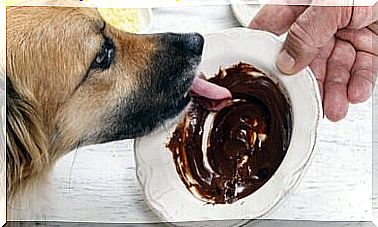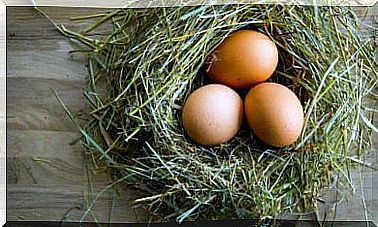The Skink: Care And Breeding In Captivity
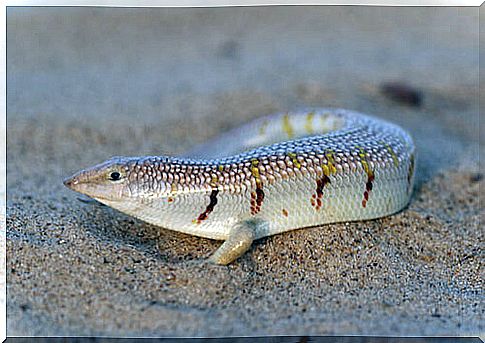
The skink ( Scincus scincus ) is an animal that has recently become very popular as an exotic pet. Lovers of reptiles admire it for its way of moving in the sand as if it were a fish. It “dives” and “swims” in the sand as if it were water. For this reason, it is also known as the sand fish.
This animal comes from deserts such as the Sahara, but also from the arid and desert areas of Saudi Arabia, Iraq and Iran. The skink is an easy animal to breed in captivity and spends most of its time in the sand of the terrarium. In this article, we will tell you what the optimal conditions are to breed and keep this elusive reptile healthy.
Preliminary considerations on skink
The skink has an elongated body, short legs and a particular skin color. It is considered a rare species. The International Union for Conservation of Nature (IUCN) was unable to report on its conservation status due to the difficulty in monitoring this reptile species.
For this same reason, the Convention on International Trade in Endangered Species (CITES) does not include skink in any of its annexes due to the total lack of information. Furthermore, this species rarely reproduces in captivity.
Thus, there is no valid data on how it reproduces. For example, it is not known whether females lay eggs or give birth to live young.
All this leads us to think that animals sold in shops or by individuals are taken directly from the wild and not bred in captivity. If you buy a skink, you should know that you are most likely supporting the illegal (or legal) trade in animals and all that that entails.
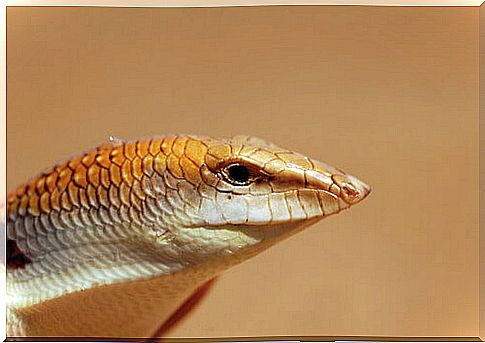
Skink: care in captivity
Although it cannot breed in captivity or the chances are very slim (given the lack of information), it is not difficult to care for and manage a skink at home. If you provide him with everything he needs, the sand fish can safely live in a terrarium.
The terrarium
The skink spends most of its life in the sand. However, it becomes more active at night when it emerges from the sand to look for food or a partner. It can reach twenty centimeters in length. Hence, it is important that the terrarium is of the right size to allow the animal to live comfortably.
The minimum dimensions of the terrarium must not be less than 75 x 30 x 30 (length, width, height in centimeters). Approximately, it should be the size of an aquarium with a capacity of 75 liters. The terrarium must also have a cover to prevent the animal from escaping.
The substrate must be composed exclusively of fine sand and have a thickness of about five centimeters. This is because, usually, the skink does not go deeper than three centimeters. This is in fact the depth where he spends most of his time.
There are types of sand, made up of calcium carbonates, which reptiles can digest after accidental ingestion. This is the best option for substrate sand and in the long run it will allow you to safeguard the life of your skink.
Inside the terrarium, you can place artificial or natural plants (such as cacti or succulents) that resist the lack of water well. In addition, you can place small caves or rocks that can be perfect hiding places for your skink.
Environmental conditions
This animal comes from desert climates and, although it can withstand high temperatures, it is preferable that the temperature inside the terrarium never exceeds 35 degrees centigrade. The optimal range for this species is between 23 and 27 degrees centigrade. At night, when the lamp is off, the temperature should not drop below 21 degrees.
Heat and light are two environmental factors to consider. It is necessary to install an ultraviolet light lamp, which needs to be changed every six months depending on the model. In addition, a heat lamp and a cold light bulb are necessary to allow the animal to distinguish the day phase from the night one.
The last aspect to consider is the humidity, which should be kept below 30%. We advise you to place plants such as cacti or succulents, and in particular those that resist a lack of water for a long time.
Feeding the skink
The skink is an insectivorous animal. Hence, it mainly feeds on insects. This reptile has the ability to sense the small vibrations these animals produce when they walk on the sand. The sand fish is a good hunter and you should never give it more insects than it can eat in ten minutes.
Based on information from its owners, the skink sporadically feeds on leaves and vegetables to satisfy its need for water. However, if you keep it in captivity, we recommend that you place a small bowl of water so it can hydrate itself whenever it needs it.
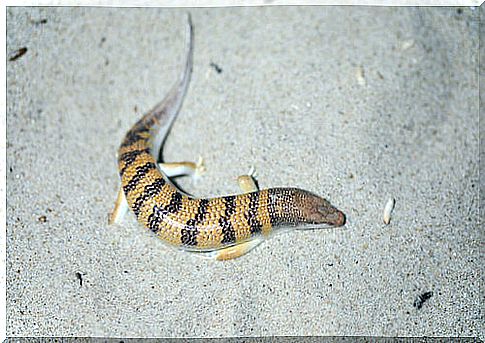
As you have seen, sand fish care does not differ much from other types of desert lizards. The main difference is the difficulty of having this animal reproduce in captivity. For this reason, these animals are often removed from their natural environment. It is up to you to decide whether to buy them or not.


